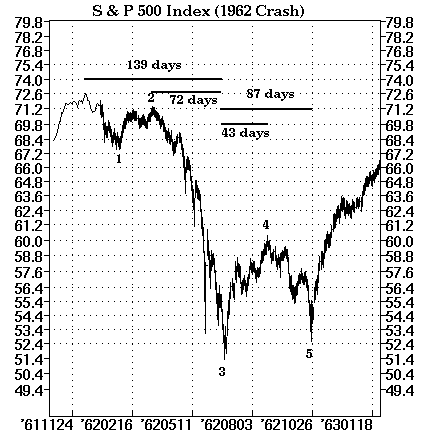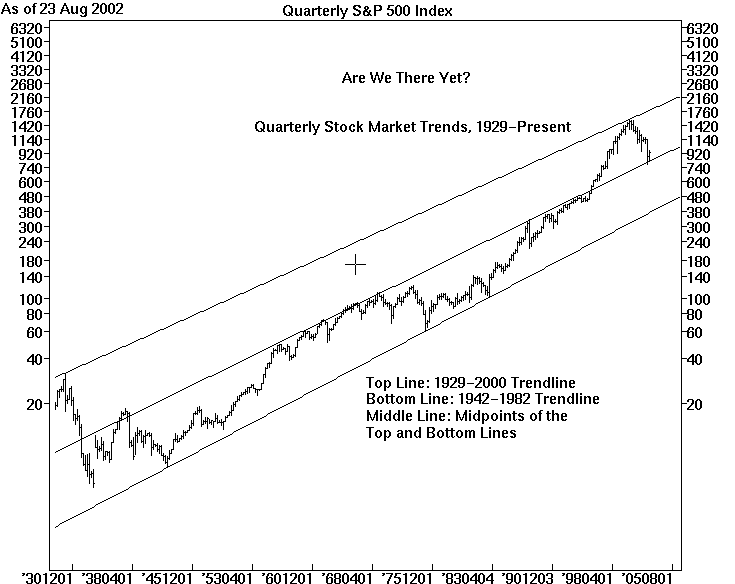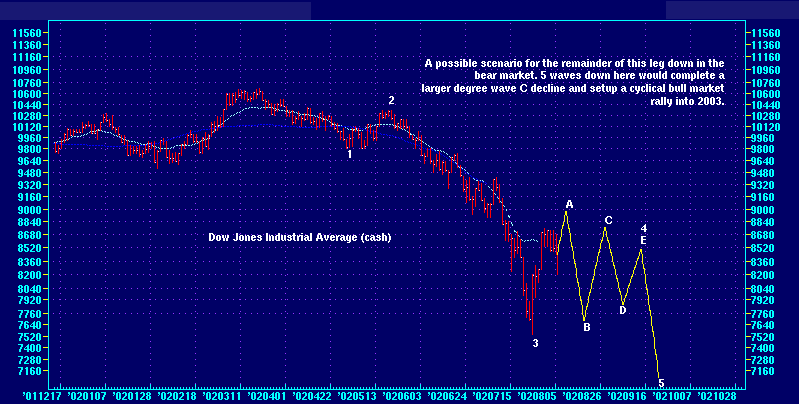| Advertisement |
|---|
Stocks: Range Trading
Last week unfolded very much as we described one week ago:
``If you're a short term trader, however, you're going to like this market because you like to play it from both short and long positions. There should be ample opportunities to do both in the coming months. But, if you're a longer term investor, you have to look for a narrowing trading range here until the Iraq situation is finally settled. And, that could be many months.''
That's exactly what we're seeing here on all of the major indices. The week began with a dip and ended with a flourish for the bulls as option expiration saw price manipulation of individual stocks to expire call and put options worthless. Some indices were weaker and some were stronger, so it's a mixed picture. Our ``lead-dog'' index, the NASDAQ-100 Index (NDX or QQQ), was relatively strong and hovered near its recovery high and a resistance trendline at the close of trading Friday. The Dow was mired in the range over two hundred points below its high of the previous week (8800). A glance at the 5-day relative strength report shows that tech sectors were leading. Such sectors as semiconductors, internet, software and networking put in net gains for the week. However, almost all daily charts on these sectors indicate that strength here is a fleeting proposition. That's because we're seeing bearish divergence as those new highs are not confirmed by corresponding highs on our oscillators.
Sentiment remains a roadblock to rally in the stock market. Our short term options-based sentiment gauges show far too much bullishness for the market to make big gains. Those figures are confirmed by longer term sentiment gauges such as Investor's Intelligence which reported that over half of all advisors are now bullish that's more than twice the number bullish at the bottom last month! That's a huge swing in sentiment which cannot be discounted. Apparently, this bear market rally has had its intended effect on the minds of market watchers. If this were a new bull market (as we had hoped it would be), the bears would still be in the majority and would be vocally calling for a crash. Instead, the bulls are out in force, urging investors to buy before prices move much higher. That's not a sign of a bull market environment.
Note: further and more detailed comments will be found on our Detailed Comments Page.
Fixed Income Exchange-Traded Funds We have summarized the fixed-income exchange-traded funds in this page ("http://www.marketclues.net/clues/fixedincomeetfs.html"). These make a good place to invest during weak periods in the stock market. They have the advantage of stocks (they can be traded when the market is open) and move in the opposite direction.
Last week, the government reported a huge jump in the Producer Price Index. The bond market
reacted initially by falling, but recovered completely by the end of the session. It's clear
that the numbers were a fantasy and the market's reaction reflects that. Remember, it's the
market's reaction to news, not the news itself, that counts.
Euro Currency:
The Euro couldn't make a new high on the failure of the central bank to cut rates
after the US Fed cut short term rates the prior week. This failure to move to a new
high is bearish for the currency and for the European economy. Is deflation ahead for
Europe? It's looking more and more likely.

U.S. Dollar Index:
The US dollar spent the week recovering from the prior week's selloff on
the Fed rate cut. Remember, the US Dollar Index moves almost exactly inversely to the Euro.

Canadian Dollar:
The Canadian Dollar is trapped in a trading range within a long term bear market. We expect a breakdown
of the range will usher in a strong move to the downside.

S&P Toronto Stock Exchange
The Canadian stock market showed strength in price last week, but the rally wasn't confirmed by our
oscillators, suggesting very limited upside potential.

Australian Dollar:
The A$ was not able to break through the long term resistance line in the weekly chart last week.
As long as that trendline is honored, we continue to believe that the A$ will eventually plumb the
lows (below 48¢).

Australian All Ordinaries:
The All-Ords continued weaker last week although it closed near the highs. The brown resistance
polytrendline points toward a down cycle lasting into the end of the first quarter of 2003 and
may be predictive that the new bull market may not get off the ground until after that timeframe.

Australia Business News

Yahoo! Australia Business News

London Financial-Times 100:
The FTSE has been stuck in a trading range below a resistance polytrendline that won't bottom
until the first quarter of next year. Without a breakout, expect more of the same.

Bonds /
Interest Rates:
Stronger economic news last week set bonds back late in the week, but the uptrend remains intact in
bond prices. And, the chart of the CRB Index suggests strongly that the Fed is not finished
cutting interest rates. In fact, cuts in the long bond rate are highly likely in the years
ahead as the Fed buys bonds to stave off the looming clouds of deflation.
Target 2030 Zero Coupon Bond Fund Quote
Sectors and Individual Stocks (Subscribers Only)
For tables ranking sectors and individual stocks, and links to charts of 3500 individual stocks and sectors, please visit your very own
MyClues Home Page![[http://www.marketclues.net/cgi-bin/myclues?myhome=yes&member=@@]](../img/1x1.gif) -- in the CHARTS & RESEARCH section of the page, you will find a wealth of tools for selecting top sectors and stocks,
including access to our exclusive realtime, intraday indicators.
-- in the CHARTS & RESEARCH section of the page, you will find a wealth of tools for selecting top sectors and stocks,
including access to our exclusive realtime, intraday indicators.
For a 3-4 month free trial subscription, click here.
Commodities (Subscribers Only)
For complete charts of commodities, please visit your very own MyClues Home Page![[http://www.marketclues.net/cgi-bin/myclues?myhome=yes&member=@@]](../img/1x1.gif) -- in the CHARTS & RESEARCH section of the page, you will find links to webpages containing links to the following:
-- in the CHARTS & RESEARCH section of the page, you will find links to webpages containing links to the following:- Daily Indices, charts of sector and popular stock and bond market indices on a daily basis
- Quarter-Hourly Indices, charts of selected indices on a 15-minute basis
- Daily Futures, charts of futures markets on a daily basis
- Quarter-Hourly Futures, charts of those same futures markets on a 15-minute basis
For a 3-4 month free trial subscription, click here.
CRB Index:
The CRB Index uptrend ended in late October as the uptrend support line was broken. The CRB
is attempting to retest that uptrend line from underneath, but it appears that a much larger
drop in commodity prices lies ahead. This is bad news from the point of view of deflation and
suggests the Fed is not finished cutting interest rates.



 Knock, Knock, Knockin' on Heaven's Door by Bill Gross
("http://www.pimco.com/"):
Knock, Knock, Knockin' on Heaven's Door by Bill Gross
("http://www.pimco.com/"):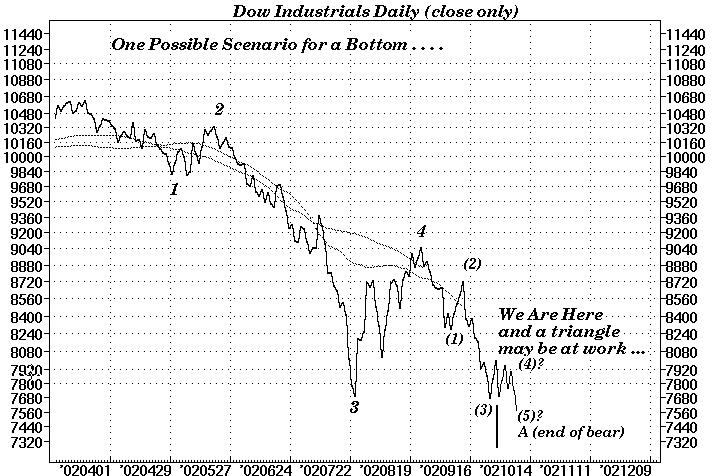

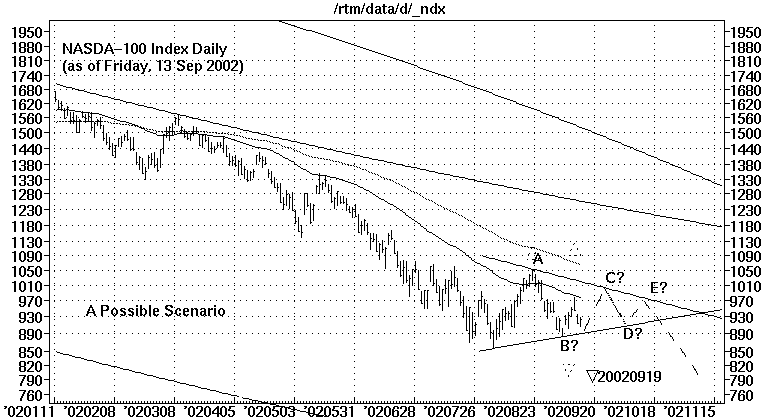

 Peace & War: The Socionomic Explanation
Peace & War: The Socionomic Explanation Has It Paid To "Follow" the Fed?
Yes, this is a provocative question ... just think of all the people who would
squirm if they had to answer it.
Has It Paid To "Follow" the Fed?
Yes, this is a provocative question ... just think of all the people who would
squirm if they had to answer it.
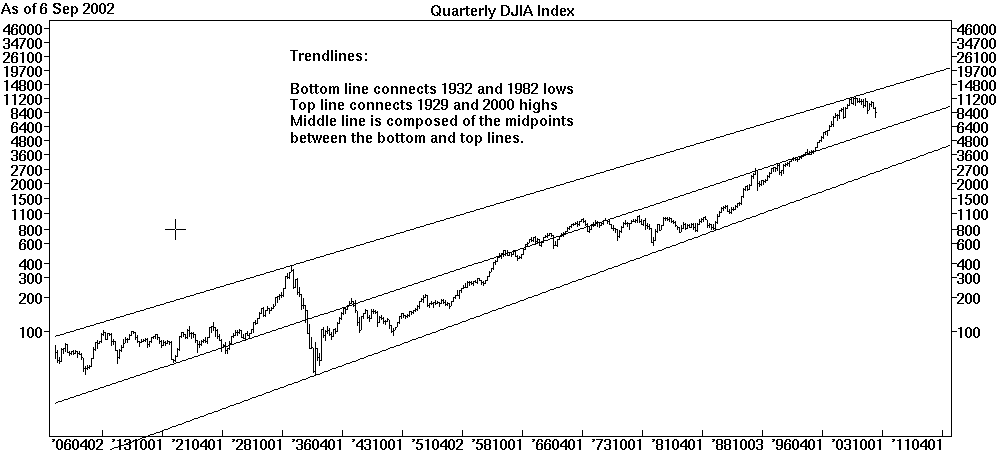
 In an interview with Kathryn Welling, Bob Prechter goes against the grain and discusses his
perspective on bull vs. bear strategies, safe banks, the Fed and
institutional investors. This interview is in Adobe Acrobat format. In order to view it you
will need the most recent version of the Adobe Acrobat Reader. You
can download this software, free of charge, from
Adobe's Web Site.
In an interview with Kathryn Welling, Bob Prechter goes against the grain and discusses his
perspective on bull vs. bear strategies, safe banks, the Fed and
institutional investors. This interview is in Adobe Acrobat format. In order to view it you
will need the most recent version of the Adobe Acrobat Reader. You
can download this software, free of charge, from
Adobe's Web Site.
